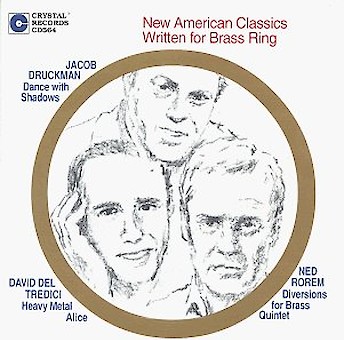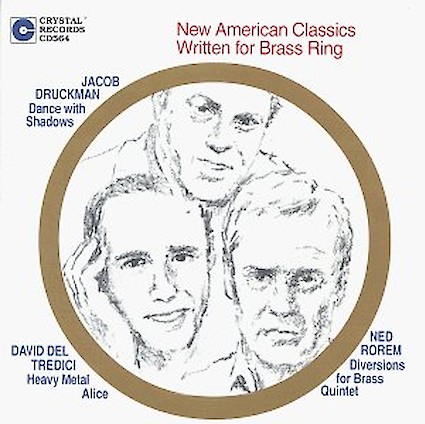It took persistence but, finally, Karl Kramer of Brass Ring convinced me to write Heavy Metal Alice. What struck fire in my imagination was his ingenious suggestion that I rework, for brass quintet, music from Final Alice.
Written in 1975 for the Bicentennial of the United States, Final Alice is scored for soprano/narrator and a huge orchestra. (The piece was premiered by the Chicago Symphony with Sir Georg Solti conducting and Barbara Hendricks, the soprano soloist.)
Final Alice tells the story—through a series of arias and orchestral episodes—of the last chapters of Lewis Carroll's Alice's Adventures in Wonderland.
How to reduce all this for a brass quintet? As is often the case with me, in the process of answering this question. i.e., composing, I went overboard and arranged the entire 55 minutes work for five brass players, calling it Brass Symphony. In the rush of enthusiasm, I had forgotten that brass players cannot, without some kind of respite, play sustained music for such a long lime. Since Brass Symphony proved impossible to perform as a single continuity, a selection of excerpts was made and titled Heavy Metal Alice.
The piece begins with an Aria (the second aria of Final Alice) preceded by a cadenza for trumpet. The music is a quirky alternation of fast/slow and start/stop.
The interval of the sixth is of crucial importance. It ends with a grandiose statement of the main theme of Final Alice. A brief, lulling passage presages the next movement, Fuga.
Lively and furious throughout, this music suggests in the book's climactic trial scene, the machinations of the Wonderland jury—a collection of appropriately bizarre creatures. A Quodlibet, combining all the themes heard thus far, brings the movement to a close.
By way of contrast, the third and final movement, called Acrostic Song, is quiet and lullaby-like. In the context of Final Alice, it is the concluding aria. However, I have added a descant for high trumpet. Stratospheric, muted agitation above the staff is counterpointed against the calmly flowing melody below. Like an ideè fixe, the descant reiterates the restless fugal theme just heard, seeming to combine into one the two disparate movements. A dream-like coda (unique to Heavy Metal Alice) concludes the piece.
Del Tredici puts music together with a deft hand, satisfying the ear's desire for interesting inner lines, layered yet decipherable textures and clever use of repetition and development. Like so many of the composer's scores, Heavy Metal Alice is inspired by Lewis Carroll's Alice in Wonderland.
Audio (3)
Recordings (1)


New American Classics Written for Brass Ring
1996, Crystal Records (CD564)Works
Performers
- Brass Ring